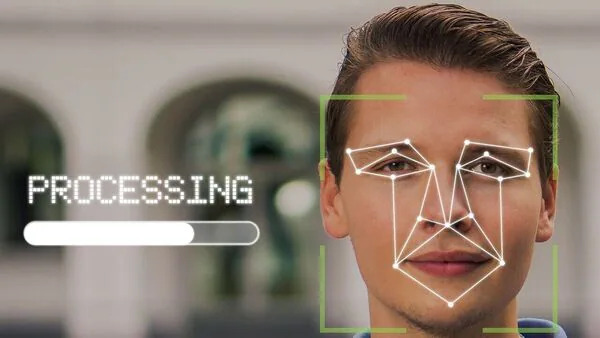In 2020, major tech giants Microsoft, Amazon, and IBM announced their decision to cease selling facial recognition technology to police forces. This move was primarily driven by ethical concerns and fears about potential racial biases embedded within these systems. At the time, I argued that while these companies were responding to heightened scrutiny following the Clearview AI scandal, the development of facial recognition technology would proceed unimpeded. For context, Clearview AI had been collecting facial images from platforms like Facebook and Instagram without explicit consent, which highlighted the potential for privacy breaches. Today, it’s evident that while the West wrestles with ethical dilemmas, the East, particularly China, has made significant strides in the advancement and application of facial recognition technology.
The West’s Ethical Quandary
The decision by Microsoft, Amazon, and IBM to halt the sale of facial recognition technology reflected a growing concern over privacy, racial bias, and the ethical implications of surveillance. The Clearview AI controversy intensified these worries, showcasing how easily facial data could be collected and exploited without user permission. In response, Western democracies have grappled with finding a regulatory balance that supports technological innovation while addressing ethical and privacy issues.
This cautious stance has led to a slowdown in the deployment of facial recognition technology across various sectors in the West. Policymakers and technology companies continue to debate the appropriate use of this technology, with companies wary of potential legal and reputational risks. This hesitance has inadvertently allowed the East to advance its capabilities in facial recognition with fewer restrictions.
China’s Rapid Progress
In contrast to the West’s cautious approach, China has embraced facial recognition technology with remarkable speed and enthusiasm. The Chinese government and technology companies view this technology as a key component of their modernization and innovation strategy. With fewer public objections and regulatory barriers, China has integrated facial recognition into numerous aspects of daily life.
Surveillance and Public Security
One of the most prominent applications of facial recognition in China is in surveillance and public security. The Chinese government has implemented an extensive network of surveillance cameras equipped with facial recognition capabilities. This system is used to monitor public spaces, track individuals, and maintain social order. While this raises significant privacy and ethical concerns, it is also seen as a tool for enhancing public safety and crime prevention.
Urban Management and Daily Convenience
Facial recognition technology in China is also extensively used to streamline urban management and improve public services. In cities like Beijing and Shanghai, it is employed for various purposes including accessing public transport, making payments, and navigating urban environments. This widespread use of technology simplifies everyday tasks and enhances convenience for citizens.
Commercial and Retail Applications
Chinese businesses have harnessed facial recognition technology to optimize their operations and enhance customer experiences. Retailers use it to analyze consumer behavior, tailor marketing efforts, and bolster security. Financial institutions utilize the technology for secure authentication and to prevent fraud. These applications highlight the commercial potential of facial recognition and its ability to drive efficiency and innovation in various sectors.
Technological Leadership
China’s rapid advancement in facial recognition technology is underpinned by substantial investments in artificial intelligence (AI). Chinese tech giants like Alibaba, Tencent, and Baidu are at the forefront of AI research and development, driving progress in facial recognition algorithms. With access to vast amounts of data, these companies are able to continually refine and enhance their AI models, making China a leader in this field.
Striking a Balance
The differing approaches of the East and West to facial recognition technology underscore the complex balance between innovation and ethical considerations. The West’s cautious approach is rooted in a commitment to protecting individual rights and addressing ethical issues, but it has also led to a slowdown in technological advancement. Conversely, China’s rapid development comes with significant privacy and ethical trade-offs, raising questions about the implications of unchecked technological progress.
The Need for Global Standards
The contrasting strategies of the East and West highlight the need for global standards and regulations for facial recognition technology. As this technology becomes more prevalent, establishing a framework that balances innovation with ethical considerations and safeguards individual rights is essential. International collaboration and dialogue are key to developing these standards, ensuring that facial recognition technology is used responsibly and beneficially across the globe.
Future Directions
Looking forward, facial recognition technology is expected to continue evolving and integrating into various aspects of society. The challenge for Western countries will be to advance this technology while addressing ethical concerns and protecting privacy. For China, the challenge will be to balance rapid technological progress with addressing the ethical and privacy implications of its extensive use.
In the future, it is possible that a convergence of East and West approaches will occur, guided by global standards that promote responsible development and application of facial recognition technology. This will require cooperation among governments, technology companies, and civil society to ensure that this powerful technology benefits society while adhering to ethical principles and protecting individual rights.
The evolution of facial recognition technology presents a tale of two approaches. The West has been slowed by ethical concerns and a cautious regulatory environment, while China has advanced rapidly, integrating this technology into many facets of daily life. This divergence highlights the intricate balance between technological innovation and ethical considerations. As facial recognition technology continues to develop, finding a middle ground that fosters innovation while safeguarding privacy and ethical standards will be crucial. Collaborative efforts to establish global standards can help navigate these complexities, ensuring that facial recognition technology serves as a force for good while respecting fundamental rights.
Disclaimer: The thoughts and opinions stated in this article are solely those of the author and do not necessarily reflect the views or positions of any entities represented and we recommend referring to more recent and reliable sources for up-to-date information.



